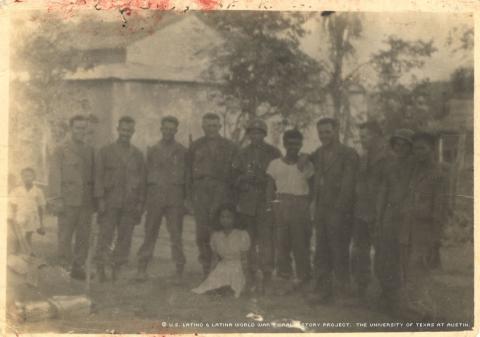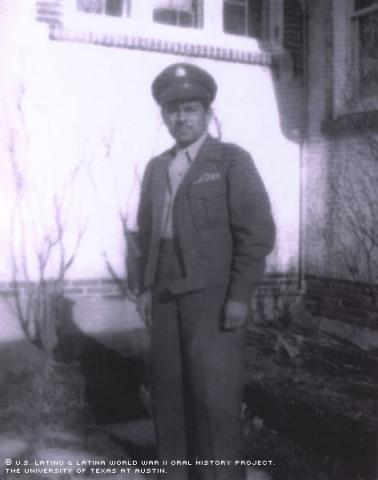

By Suzanne Hanshaw
It was the afternoon of April 30, 1945, on the Philippine island of Luzon. The first scout of the attacking squad had been shot and Pedro Perez volunteered to rescue him in a hail of machine-gun fire. Even after Perez was wounded in both legs, he crawled through the brush, sparing both their lives.
It would be a miserable 7 hours before he received medical attention.
“It was about 3 o’clock in the afternoon … and I bled from there until after 10 at night,” Perez said.
Before this dramatic rescue, he experienced a time of fun without fearing danger. His Army unit traveled to various cities in Australia, where he remembers dances, cantinas and … women.
“We had all the freedom we could get,” he said.
Australia was a long way from Central Texas, where Perez was born in Wimberley on Oct. 19, 1921, to Victor Perez and Sapapa Martinez Perez. He grew up Catholic, with two brothers and two sisters. School wasn’t a top priority for the family; rather, the children worked the fields. The nearest school was almost four miles away, so a majority of school-aged children labored instead of attending classes.
Perez and both of his brothers were in the Army or National Guard at some point during the war. Perez enlisted in the Army in July of 1942, only 14 days after having come home from the Civilian Conservation Corps.
He became a member of the CCC in 1939 at age 17 or 18, at which point he recalls traveling to Yuma, Ariz., to primarily do construction work – either building fences or irrigation fields. The camp was made up of more than 250 workers and contained 24 barracks. The Corps mostly consisted of Latinos and Anglos, but no blacks, he says.
Perez returned to his home in San Marcos, Texas, but left soon afterward for 13 weeks of basic training in the Army. Shortly afterward, he recalls his unit, the 32nd Infantry Division, leaving the camp on a ship without any knowledge of their destination.
His group began its journey with a 25- to 30-day boat trip to Australia.
“We didn’t know where we were going; we were just going,” Perez said.
In the early months of 1942, the soldiers came ashore in an area almost 18 miles outside of Sydney. They then traveled to Brisbane, Australia, where Perez says he liked the swing and jazz music that played at the dances the men frequented.
The fun times would soon come to a halt, however, as the group again set out on a boat destination unknown, eventually ending up in New Guinea.
“We advanced through the jungles until we came to this river. There, we set up the front line,” he said.
The Japanese were advancing and Perez and his fellow soldiers were scared. Some claimed they weren’t afraid of the imminent danger, but Perez was skeptical, calling the claim “a big fat lie.”
His infantry left New Guinea and changed locations to Luzon. When they landed there, opposing troops were firing at their barge. Perez’s daring rescue came at this point.
It took such a long time for him to receive medical help because the hospital was more than 40 miles away. His wounds were so bad he remained in convalescence for more than a year.
The Army informed Perez of his honorable discharge in July of 1947, while he was convalescing in Percy Jones General Hospital in Fort Custer, Mich. He took home 10 medals of recognition, including a Silver Star for the rescue, as well as the Purple Heart, a Bronze Star and a WWII Victory Medal.
In January of 1948, he married Eva Ochoa in San Marcos, one year after his discharge.
“I wanted to settle down and do something,” Perez said.
He enrolled in Laredo Junior College and stayed for two years to learn to read and write in English. He also took a job as a tailor. The couple had two children: one son, Pedro Junior, and one daughter, Esmeralda. They all moved to Austin in 1952.
Pedro Perez was interviewed in Austin, Texas, on November 23, 2004, by Robert Hernandez.

